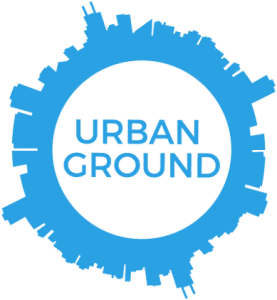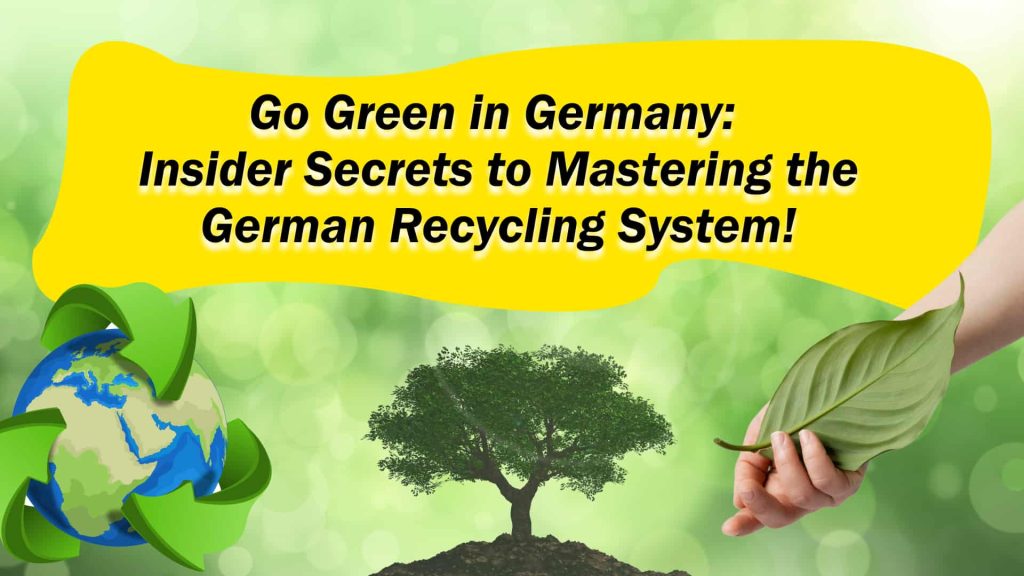
Germany has essentially earned the title of a global recycling powerhouse. With an impressive 67% recycling rate, second only to Slovenia, Germany is on a steadfast journey towards achieving an ambitious 75% recycling rate by 2025. This commitment is deeply ingrained in everyday life and culture, evidenced by innovative systems and inspiring stories.
At the heart of consumer choice is the Green Dot (Grüner Punkt) system, a green superhero in its own right. This small but mighty symbol on product packaging guides consumers towards products made from recycled materials, reinforcing the ethos of environmental responsibility.
Meanwhile, the “Pfand King” of Berlin, a champion in bottle collecting, amassed a staggering €85,000 in deposits in a single year, showcasing the lucrative potential of diligent recycling.
As a newcomer, understanding and participating in this efficient and celebrated recycling system is not just a responsibility but an opportunity to be part of Germany’s green revolution.
Make sure to read: Top 5 Exclusive Apple Discounts for Students in Germany You Can’t Miss!
6 Recycling Practices and Systems in Germany
Thorough recycling practices and systems hold the sustainability culture of Germany together. As expats or citizens, these are a few of them that requires your hands-on effort.
#1 The “Pfand” Bottle Deposit System
Germany’s innovative Pfand system, a deposit refund mechanism for beverage containers, is a cornerstone of the country’s celebrated recycling culture. Here’s how it works and its notable impacts:
- Mechanism: When purchasing beverages, consumers pay a deposit (Pfand) ranging from €0.08 to €0.25, depending on the container type and size. This applies to glass bottles, plastic bottles, and aluminum cans. A 0.5-liter glass bottle, for instance, carries a €0.08 deposit, while a 1-liter plastic bottle has a €0.25 deposit.
- Return Process: To reclaim the deposit, consumers return the empty container to any participating retailer, which includes a wide range of establishments like supermarkets, convenience stores, and gas stations. The retailer scans the container’s barcode to determine the deposit amount, which is then refunded in cash or as store credit.
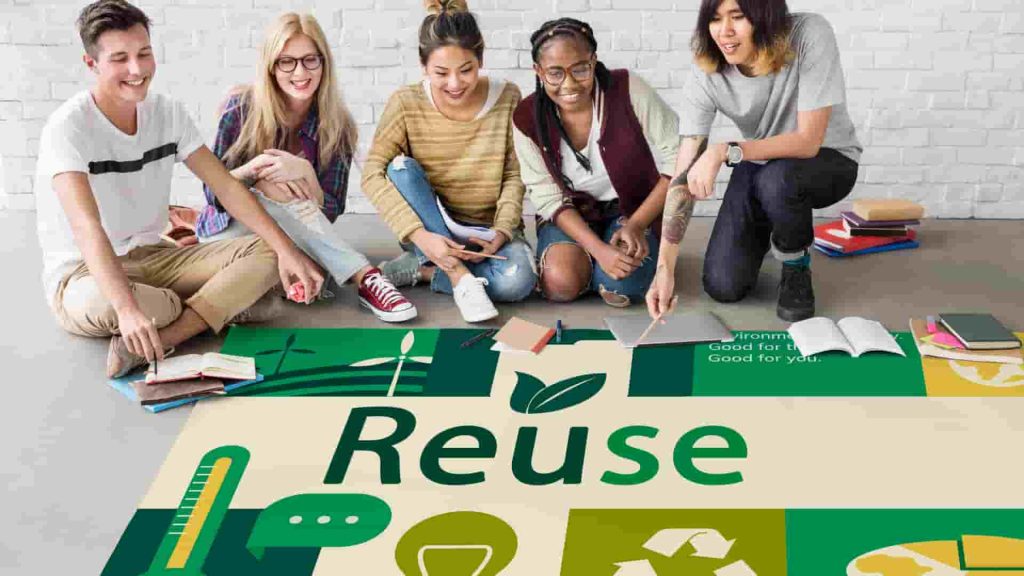
Impact on Consumer Behavior and Environmental Benefits
- High Return Rate: The system boasts an over 98% return rate for beverage containers, significantly reducing litter and waste.
- Economic Incentive: The financial incentive encourages consumers to return containers, fostering a habit of recycling.
- Resource Conservation: By promoting the return and reuse of containers, the Pfand system conserves natural resources and energy required to produce new containers.
- Reduced Landfill Waste: With most containers being returned and recycled, fewer end up in landfills, thereby minimizing environmental pollution.
- Public Participation in Recycling: The Pfand system engages the public actively in the recycling process, creating widespread environmental awareness and responsibility.
Germany’s innovative approach to recycling includes a color-coded bin system, making it easier for households to sort their waste efficiently. Each bin color represents a specific type of waste, streamlining the recycling process and ensuring the highest quality of recyclable materials.
Also read: 7 Simple Ways to Make Your Apartment More Eco-friendly
#2 Six Colours, Six Categories
The meticulous sorting in this system is crucial for multiple reasons. It ensures that recyclable materials are not contaminated, which can render them unusable. By separating waste at the source, the quality of recycled products is enhanced, and the environmental impact of waste is significantly reduced. Moreover, this system educates and involves the public in sustainable waste management practices, fostering a culture of environmental responsibility.

What Goes Into Each Bin
Yellow Bin (Gelbe Tonne or Gelber Sack):
Purpose: For packaging made of plastic, metal, and composite materials.
Examples: This includes plastic bottles, yogurt cups, aluminum cans, tin foil, empty aerosols, milk cartons, and beverage cartons.
Blue Bin (Altpapiertonne):
Purpose: Dedicated to paper and cardboard.
Examples: Newspapers, magazines, envelopes, cardboard boxes, paper bags, paper towels, and toilet paper rolls are disposed of here.
Green Bin (Biotonne):
Purpose: For organic waste and food scraps.
Examples: Kitchen scraps, garden waste, coffee grounds, tea bags, eggshells, grass clippings, and leaves.
Brown Bin (Braune Tonne):
Purpose: Used for disposing of clear glass.
Examples: Clear glass bottles, clear glass jars, and broken clear glass pieces.
White Bin (Weißglascontainer):
Purpose: For green glass items.
Examples: Includes green glass bottles, green glass jars, and broken pieces of green glass.
Black or Gray Bin (Restmüll):
Purpose: Handles residual waste, which is non-recyclable.
Examples: Dirty diapers, cigarette butts, vacuum cleaner bags, broken ceramics, light bulbs, polystyrene, and plastic wrap.
We think you’ll love this: 7 Amazing German Celebrations and Holidays That Need To Be On Your Radar
#3 The Green Dot System
The Green Dot system, symbolized by the “Grüner Punkt” logo, is a pivotal component of Germany’s recycling and waste management framework. This system places a unique responsibility on manufacturers and retailers, directly linking them to the environmental impact of their products.

Impact of the Green Dot System
- Manufacturer Responsibility: Companies using packaging materials are obliged to pay a fee for the Green Dot label. This fee contributes to the cost of collecting, sorting, and recycling the packaging materials.
- Packaging Design Influence: The fee structure encourages manufacturers to rethink packaging designs, promoting the use of materials that are easier and more economical to recycle.
- Waste Reduction: By making manufacturers financially responsible for the end-of-life of their packaging, the Green Dot system motivates them to reduce packaging waste.
- Consumer Awareness: The presence of the Grüner Punkt on packaging informs consumers about products that are part of this environmentally responsible system.
- Supports Recycling Infrastructure: The fees collected under this system help finance the recycling infrastructure, ensuring efficient and sustainable waste management.
In essence, the Green Dot system not only compels manufacturers to consider the environmental impact of their packaging but also plays a crucial role in driving innovation in packaging design and fostering a culture of sustainability in product manufacturing and consumption.
#4 Beyond the Bins: Comprehensive Recycling Practices
Germany’s commitment to recycling extends far beyond the conventional bin system, encompassing a comprehensive network of practices that facilitate efficient waste management in various settings.
In apartment buildings, recycling is often streamlined through designated recycling rooms. These spaces are equipped with multiple chutes or bins, each corresponding to different waste streams like paper, packaging, and organic waste. This setup simplifies the sorting process for residents, making it more convenient to recycle correctly.
Don’t forget to read: 5 Amazing Ways in Which Berlin Practices Sustainability and Eco-Friendly Living

How Does the Pfand Machines Work in Buildings?
Public spaces in Germany also reflect this recycling ethos. Pfand machines are a common sight in many areas, especially near supermarkets and train stations. These machines accept deposit bottles and cans, instantly refunding the Pfand value. This not only encourages recycling on-the-go but also helps keep public areas clean and litter-free.
For bulky items that cannot be disposed of in regular bins, special collection points and scheduled pickup services are available.
Items like furniture, large electrical appliances, and other sizable waste products can be taken to these collection points or left out for collection on designated days. This ensures that larger items are disposed of responsibly and, where possible, recycled or repurposed.
#5 Recycling Education and Cultural Integration
In Germany, the ethos of recycling and environmental stewardship is deeply rooted in education and community initiatives, playing a vital role in cultivating a culture of sustainability.
Fostering a Culture of Recycling through Education and Community Efforts
- School-Based Recycling Education: German schools incorporate recycling and environmental awareness into their curricula. Students learn the importance of waste separation, the impact of littering, and the broader implications of waste on the environment.
- Community Recycling Initiatives: Local communities often organize waste collection days, where residents come together to collect litter from public spaces. These events are not only about cleaning up but also serve as educational opportunities, especially for young people.
- Practical Learning: Educational programs often include visits to recycling plants or workshops on sustainable living, providing hands-on learning experiences.
- Public Awareness Campaigns: Frequent campaigns in the media and public spaces reinforce the importance of recycling and inform the public about best practices.
- Role Model Effect: Seeing adults engaged in proper recycling behaviors sets a positive example for younger generations, fostering responsible habits from an early age.
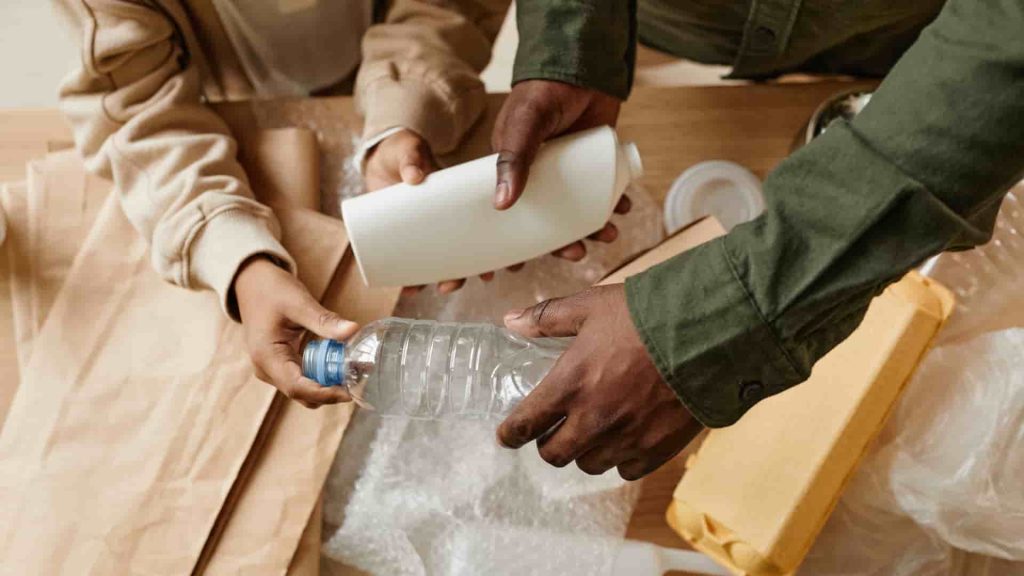
#6 Innovative Technologies in Waste Management
Germany’s waste management system is a testament to innovation, utilizing cutting-edge technologies to enhance efficiency, promote renewable energy generation, and reduce emissions.
High-Tech Sorting Lines
One of the most notable advancements is in sorting facilities, where advanced machinery equipped with optical sensors, magnets, and even AI technology is used. These high-tech lines can accurately and efficiently sort different materials, significantly reducing human error and contamination.
This precision ensures that recyclable materials are processed at the highest quality, maximizing their reusability.
Your recommended post for the week: A Peek into a Day in German Life
Biogas Plants
A crucial component of Germany’s waste management is the use of biogas plants. Organic waste, including food scraps and garden trimmings, is processed in these facilities rather than going to landfills. The anaerobic digestion process in these plants generates biogas, a renewable energy source, and produces digestate, a nutrient-rich fertilizer used in agriculture. This not only helps in energy production but also contributes to a circular economy by returning valuable nutrients to the soil.
#7 Smart Waste Management Solutions
In an effort to optimize waste collection and reduce environmental impact, some German cities are piloting smart bins. These are equipped with sensors that monitor fill levels and can alert waste collection services when they are ready to be emptied. This smart system minimizes unnecessary collection routes, thereby reducing fuel consumption and emissions.
Community and Social Initiatives
In Germany, community and social initiatives play a pivotal role in enhancing recycling efforts and promoting sustainability, with Repair Cafés and various upcycling projects leading the charge.
Repair Cafés
These community-driven hubs are more than just repair centers; they are a movement towards sustainable living. Volunteers at Repair Cafés assist people in fixing broken items like clothing, bicycles, and electronics, thus preventing these items from being prematurely discarded.
Beyond the repair work, these cafes serve as educational platforms, hosting workshops and skill-sharing sessions that advocate for a circular economy and emphasize the importance of waste reduction.
Recycling Upcycling Initiatives
Projects like “Rethink Fashion” demonstrate innovation in recycling. These initiatives collect used clothing and textiles, transforming them into new, wearable items or home decor. This not only promotes the creative reuse of materials but also generates income for individuals involved in the process, contributing to both environmental and economic sustainability.
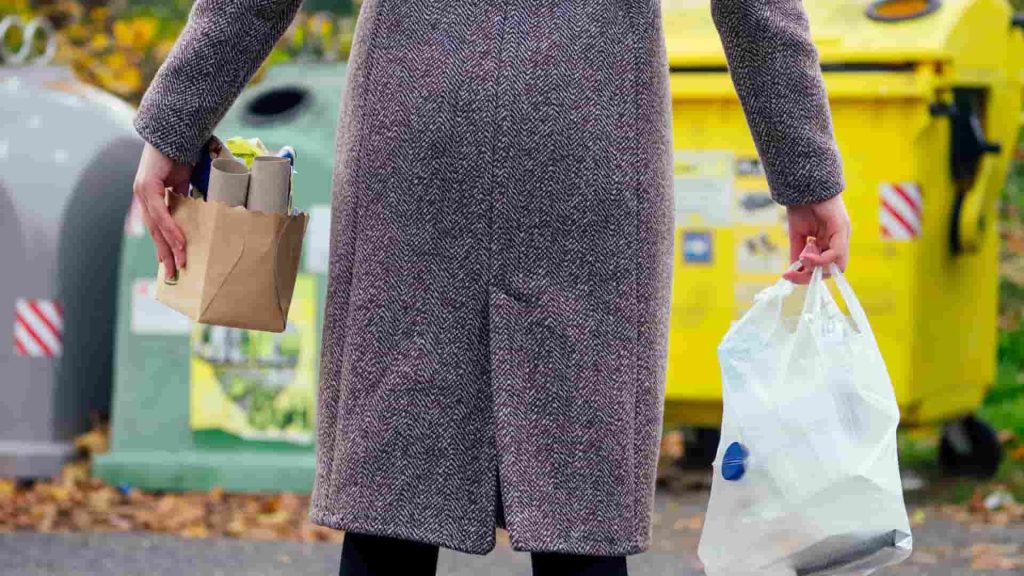
School and Youth Programs
Educational programs such as “Mülldetektive” (Garbage Detectives) engage young minds in the world of recycling. Through interactive activities, children learn about waste sorting, the recycling process, and the importance of composting.
These programs are instrumental in fostering environmental responsibility from a young age, ensuring that future generations are equipped with the knowledge and values to continue these sustainable practices.
Embracing Germany’s Recycling Processes for a Greener Future
Germany’s recycling system is a beacon of environmental stewardship, seamlessly integrating innovative technologies, community initiatives, and educational efforts into daily life. The comprehensive approach, from the Pfand system to the color-coded bins, not only champions sustainability but also fosters a culture deeply rooted in environmental responsibility.
For newcomers, understanding and participating in this system is more than a civic duty; it’s an opportunity to contribute to a greener future.
As Germany continues to lead by example, its recycling practices offer valuable lessons in creating a sustainable world, one sorted bin and repaired item at a time.

